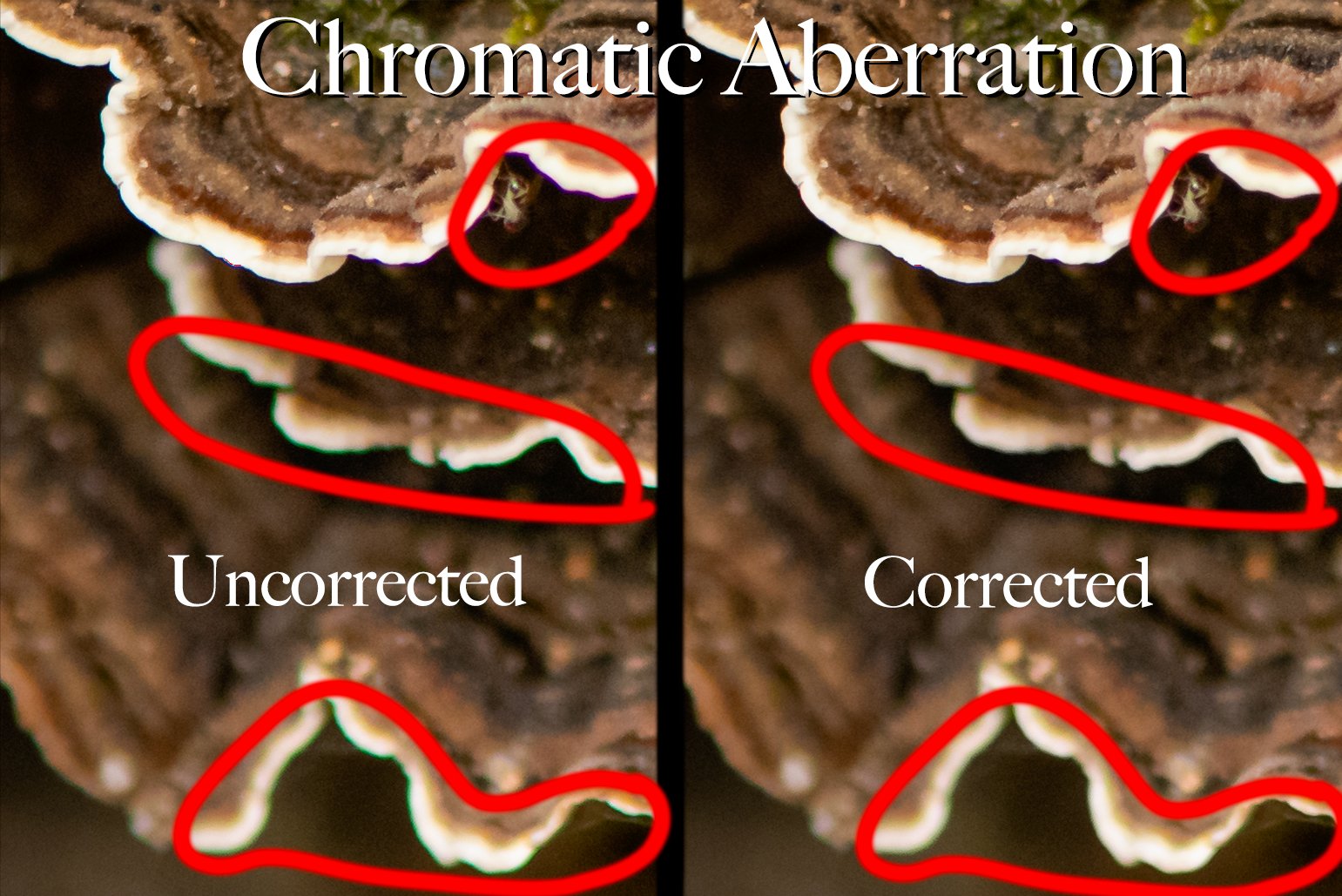Belted Kingfisher Flyby
Sometimes paintings that look very much like real life are called photorealistic because they appear almost like photographs. Similarly, photography can be used to create more painterly images, even using techniques mostly performed in camera. Today we’ll explore one method of doing this, that of panning with a subject using long exposures to create intentional motion blur, and it doesn’t require pro-level cameras or lenses.
The Setup
On July 3, 2009, my brother and I visited Luray, Virginia and their fabulous Greenway, a beautifully maintained park system with a stream and walkway that runs through the town. In one area we heard the call of a belted kingfisher and watched as it repeatedly flew quickly upstream, and then back downstream. I had with me the kit lens that came with my camera, an 18-200 mm f/3.5-5.6 lens. In this case the 200 mm helped me get a little closer to the kingfisher, but if you photograph larger subjects or are willing to have a smaller subject then you can easily use a shorter focal length just as well.
The kingfisher was moving quickly and the light was a little subdued under the leaves of the trees. I doubted I could get nice clear photos of the kingfisher in flight, though I did initially try that, so I eventually settled on creating slightly more abstract painterly photos. I wanted the kingfisher as large as it could be so I zoomed in as far as I could to 200 mm. There wasn’t a lot of light so I knew shutter speeds would be an interesting challenge. I opened up the aperture of the lens all the way, to f/5.6 at 200 mm. I then raised my ISO to 640 to let me set faster shutter speeds. This gave me shutter speeds between 1/15 to 1/60 of a second. I could have worked in manual exposure mode and set everything, and if you want a specific look this is what you should do, but given I was panning through different areas with different light levels, and I was just having fun experimenting, I chose to work in aperture priority mode, my typical setting, where I choose the aperture and let the shutter speed fall where it may.
The Kingfisher Soars
Technique: Panning
So what is panning? It’s moving the camera with the subject and letting the background blur. If you see the bird coming from the left then face straight ahead and twist your body towards the left. Find the bird in your viewfinder and begin focusing. Stick with it as it flies by, pressing the shutter button in continuous mode so you create many images as it flies by, with you continuing to track it as it does, twisting your body to the right. Keep with it as it flies by to the right until it’s flown beyond your view. Hopefully, somewhere in that group of photos you’ve created a winner.
It requires a lot of experimentation to find just the right shutter speed for your subject. Do you want the subject in perfect focus, or are you willing to let the subject remain a bit blurry as I chose to here? And how fast is the subject moving? The shutter speed you need will depend on those factors, so you’ll need to practice to find what works for you in that specific instance.
The Kingfisher Calls
Painterly Aspects
Notice how different each of the three photos here look. In the case of the first photo, Belted Kingfisher Flyby, the bird is moving very quickly so I’m panning very quickly which creates a complete blur to the background. The shutter speed is 1/15 second so there’s plenty of time for the background to blur. You can see how far the bird, and my camera, moved in that time by looking at the length of the lighter colored lines in the photo.
The second photo, The Kingfisher Soars, is similar but the bird was flying at an angle so I didn’t pan quite as fast, and I used a faster shutter speed of 1/50 second. You can see the lines of color from the background are shorter. They begin to look a little more like long paint strokes.
With the third photo, The Kingfisher’s Call, I’m now at a faster shutter speed with 1/60 second, and the bird isn’t moving nearly as fast, almost hovering as kingfishers sometimes do. Look closely at the lines of color and light in the background of the photo. See how much shorter they are? Now, perhaps, they most resemble strokes of a paintbrush. And the bird is almost in focus, or at least more so than with the other two photos.
One thing to note, you could find a fast enough shutter speed that works with both the subject movement and your ability to pan, such that you actually get the subject almost completely in focus and the background a blur. This can be a lot of fun, too. But in this case, trying for a more painterly effect, I was fine with the subject remaining a bit blurry from the motion. I thought it contributed to the look of the images.
Post-processing
So the majority of the technique is in-camera using the three basic camera settings of shutter speed, aperture and ISO. But I did do work in post after I’d downloaded the photos to my computer. I used Adobe Lightroom to adjust exposure, lessening some of the highlights, darkening some shadows, blurring the backgrounds a bit more by lowering clarity, and accentuating the kingfisher by keeping the whites of its body bright and the colors dark and bold.
Below are before and after examples of each photo showing how it looked before I began processing in Lightroom and when I’d finished so you can see what effect this had. Click on each image to cycle between before and after

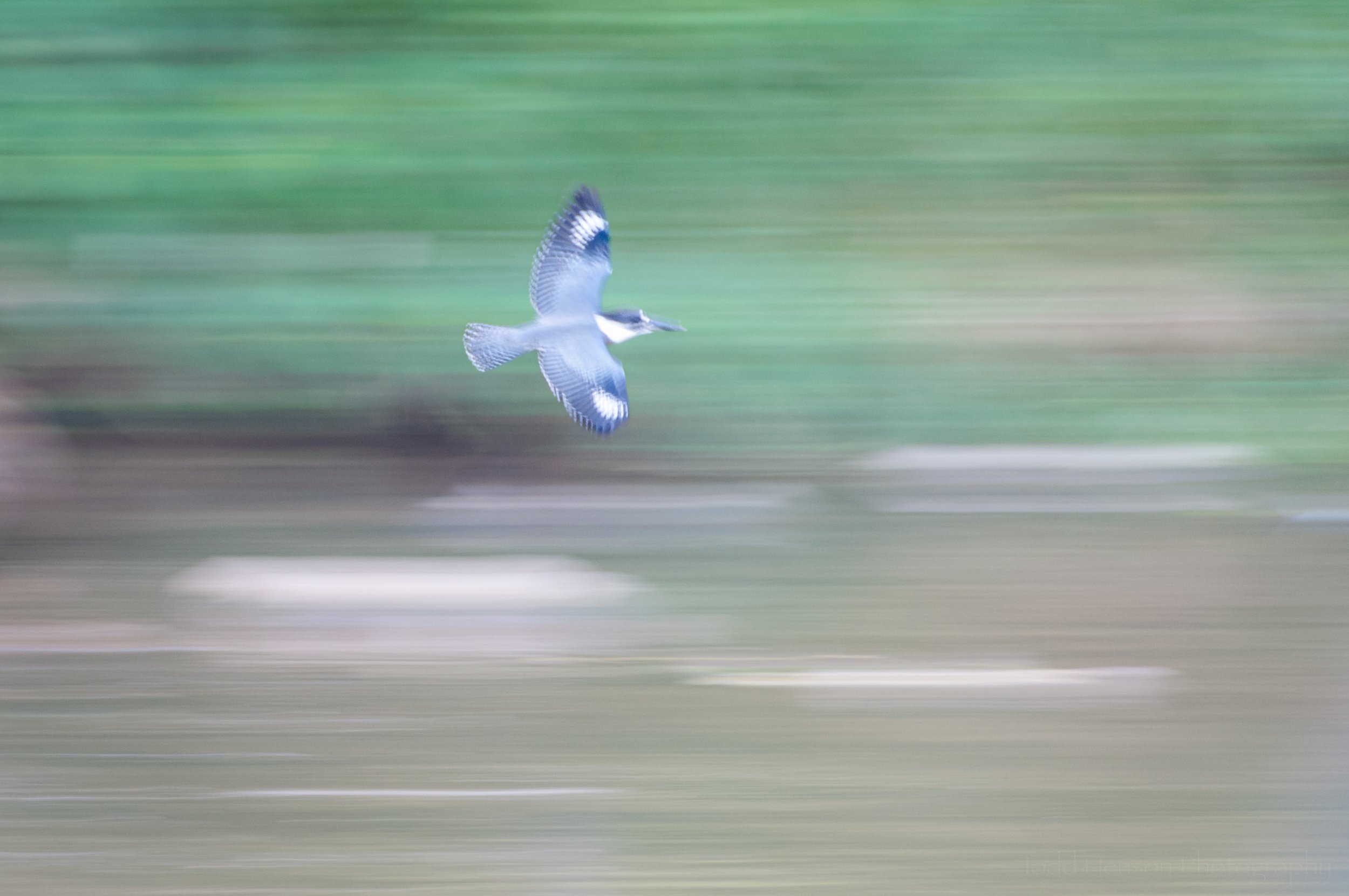
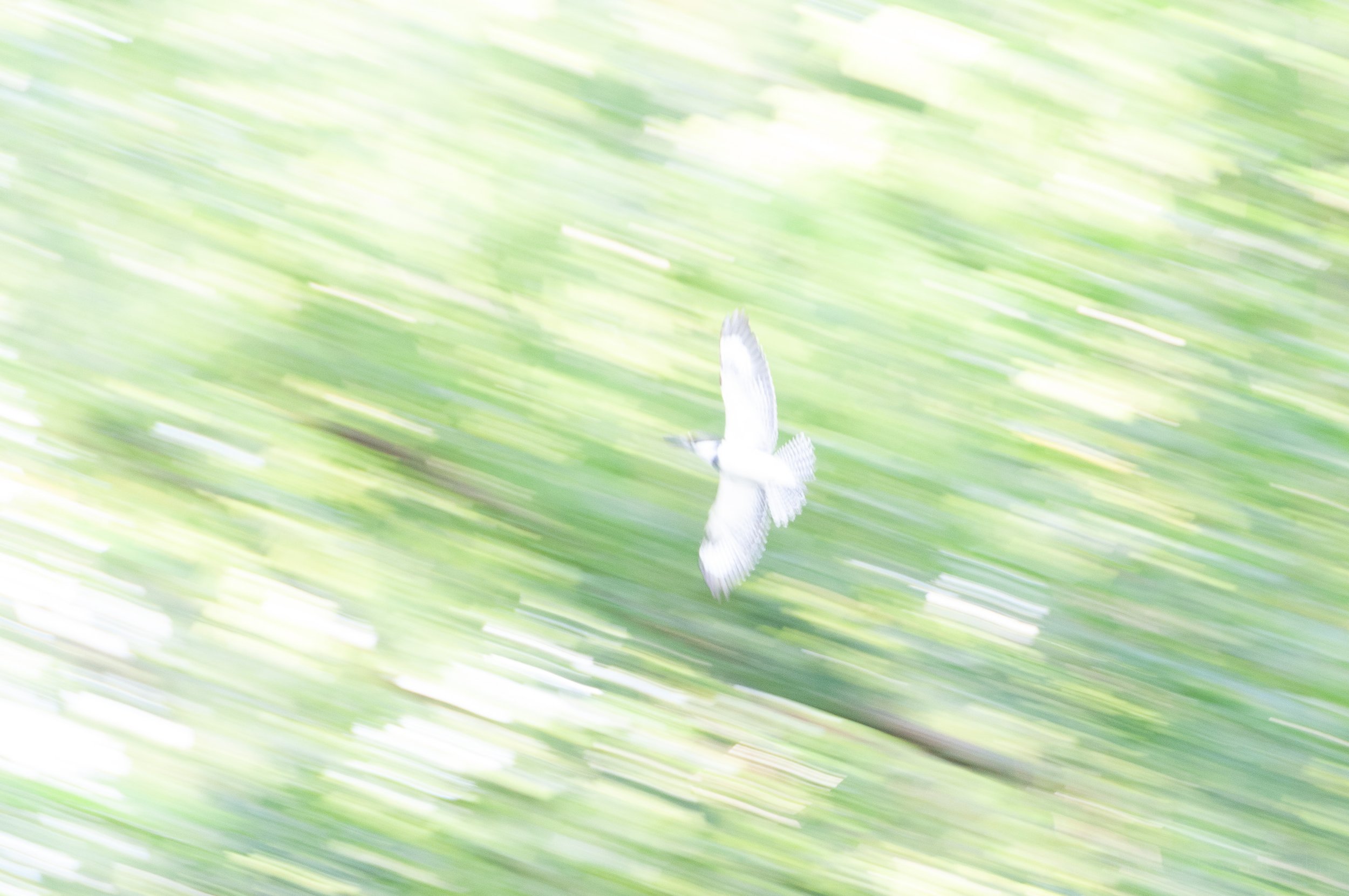

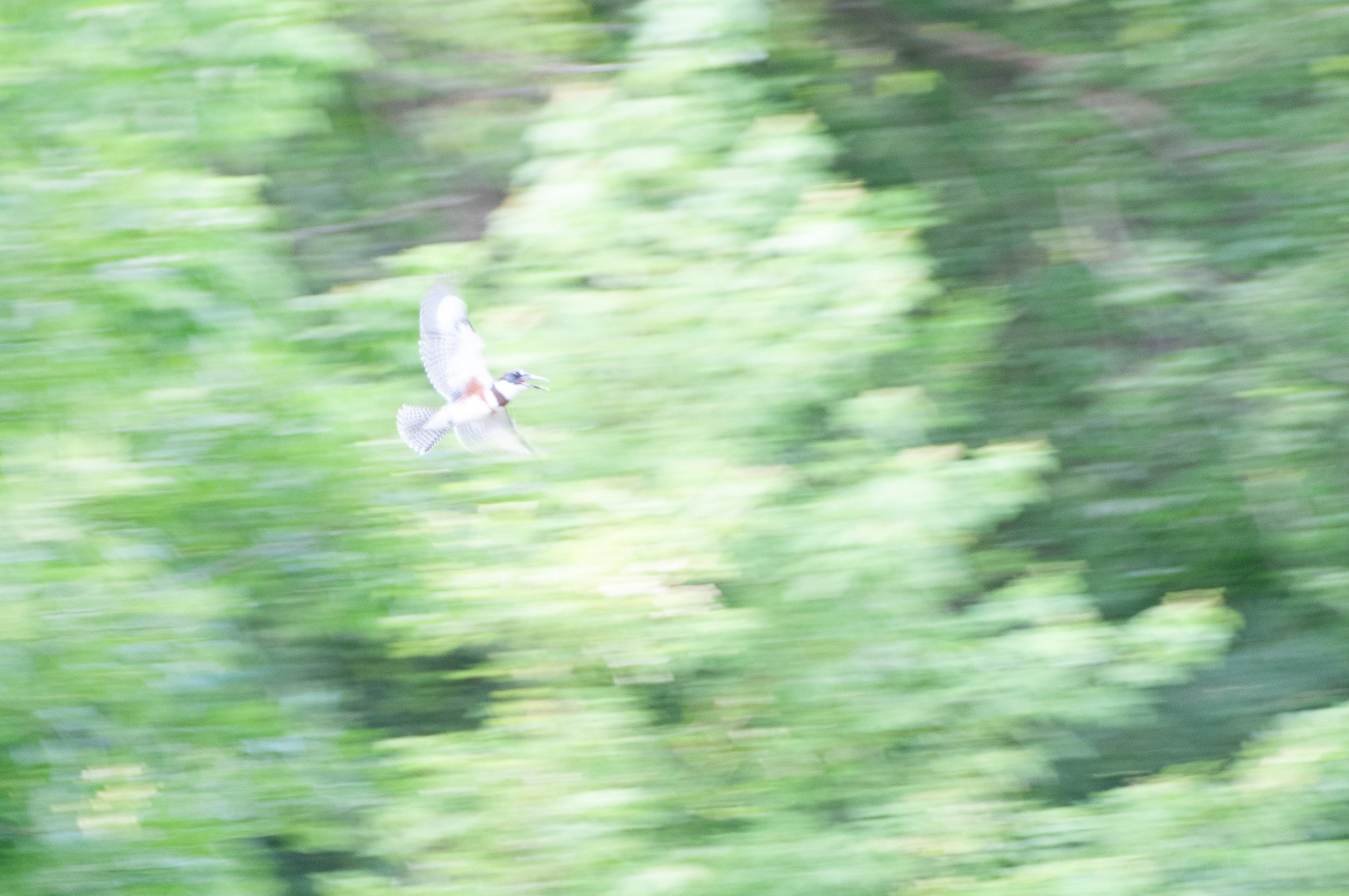
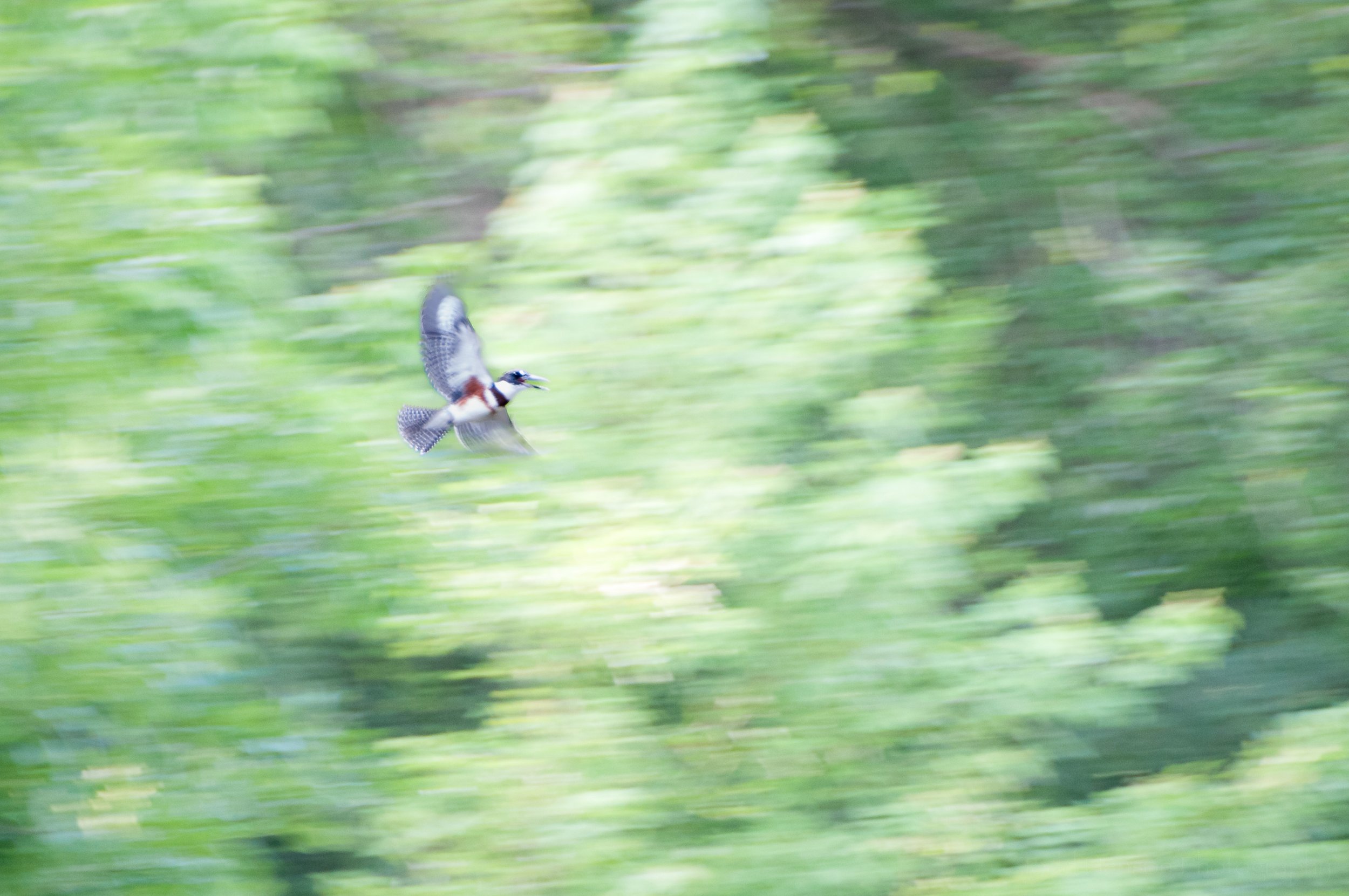
Final Thoughts
So what do you think? Have you tried this before? If not, give it a go. And you don’t have to photograph a bird to do this. You can chose any moving subject, such as a car or bicycle. In fact, you don’t even have to chose a moving subject. I’ve show before how you can use this technique on landscapes to create slightly more painterly views of the world. Give it a try, and let me know how it goes.
For other examples, see A Day for Abstracts in the Forest and Turbulence in Motion.
Do you enjoy these posts?
Sign up to receive periodic emails with updates and thoughts. Don’t worry, I won’t spam you. And please consider purchasing artwork or products from my online store, and using my affiliate links in the sidebar to the right when shopping online.
I appreciate your support!
